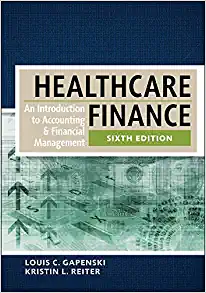Question
Drinkeverywhere is an American retailer located in Seattle, WA. The company president is Sam Cooper, who inherited the company. When the company was founded over
Drinkeverywhere is an American retailer located in Seattle, WA. The company president is Sam Cooper, who inherited the company. When the company was founded over 60 years ago, it originally focuses on retailing high-end beverage, wines, and finer foods to more than 30 states in the US. Over the years, the company still maintains its main business, which accounts for about 50 percent of its total revenue. Faced with stiff competition, the company also expanded into the business of manufacturing its own beverages. You and your team, the Carson College of Business graduates, are hired by the company's finance department to evaluate a new project for the company.
One of the major revenue-producing items of Drinkeverywhere's manufacture division is a sparkling soft drink. Drinkeverywhere currently has one flavor of this beverage, with size of 12FL OZ each, and sales have been excellent. Drinkeverywhere's main competitor on the beveragemarket is the Coca-Cola Company (KO). Drinkeverywhere's drink is healthier but has similar taste to Coke.
However, Drinkeverywhere wants to incorporate a new flavor into their products. Drinkeverywhere spent $100,000 to develop a new technology for its beverage that has all the features of the existing one but adds a new flavor, which can balance the original taste while having some new and exotic flavor to it. The new product also has much lower calories. The company has spent a further $25,000 for a marketing study to determine the expected sales figures for the new flavor.
Drinkeverywhere can manufacture the new beverage for $0.5 per can in variable costs. Fixed costs for the operation are estimated to run $2.5 million per year. The estimated sales volume is 3,400,000, 2,550,000, 2,950,000, 2,680,000 and 1,978,000 cans per year for the next five years, respectively. The unit price of the new beverage will be $2.5 per can. The necessary equipment can be purchased for $12 million and will be depreciated on a seven-year MACRS schedule. It is believed the value of the equipment in five years will be $2 million.
As previously stated, Drinkeverywhere currently manufactures a beverage product. Production of the existing product is expecting to be terminated in three years. If Drinkeverywhere does not introduce the new beverage product, sales of the existing product will be 2,000,000, 1,990,000 and 187,000 cans per year for the next three years, respectively. The price of the existing drink is $1.5 per can, with variable costs of $0.3 each and fixed costs of $0.8 million per year. If Drinkeverywhere does introduce the new beverage, sales of the existing one will fall by 5,000 cans per year, and the price of the existing drinks will have to be lowered to $1.2 each can. Net working capital for the beverage will be 20 percent of sales and will occur with the timing of the cash flows for the year; for example, there is no initial outlay for NWC, but changes in NWC will first occur in Year 1 with the first year's sales. Drinkeverywhere has a 25 percent corporate tax rate. The company has a target debt to equity ratio of .55 and is currently A+ rated (according to S&P 500 ratings). The overall cost of capital of the company is 12 percent.
The finance department of the company has asked your team to prepare a report to Sam, the company's CEO, and the report should answer the following questions:
- Can you and your team prepare the income statement table, the operating cash flow (OCF) table, and the total cash flow from assets (CFFA) table for this project?
- Can you use these tables to help explain to Sam the relevant incremental cash flows of this project?
- James, a newly graduated MBA in the company's finance department suggested that youshould use 12% as the discount rate for the discounted cash flow (DCF) analysis for this new project. Do you and your team agree with James?
- a)If Yes, can you explain to Sam, the president of the company, why you should use 12%?
- b)If Not, please find the cost of capital for this project, and explain in details how your team comes up with this number and why it is proper for this DCF analysis?
- What are the NPV and IRR of the project?
- Should Sam take the new project? Why or why not?
Step by Step Solution
There are 3 Steps involved in it
Step: 1

Get Instant Access to Expert-Tailored Solutions
See step-by-step solutions with expert insights and AI powered tools for academic success
Step: 2

Step: 3

Ace Your Homework with AI
Get the answers you need in no time with our AI-driven, step-by-step assistance
Get Started


